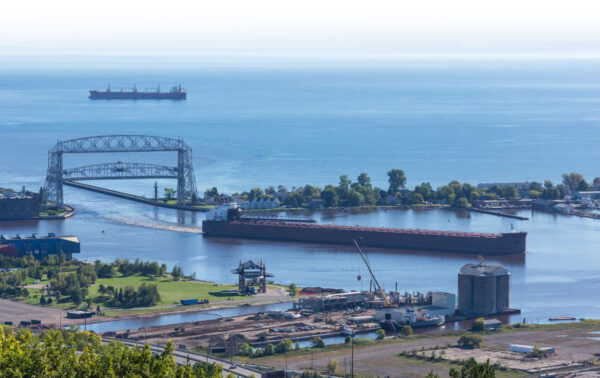The 2010 Hazardous and Noxious Substances (HNS) Convention sets out a liability regime to compensate for damage caused by incidents involving HNS transported by sea.
Developed by the International Maritime Organization (IMO), The International Convention on Liability and Compensation for Damage in Connection with the Carriage of Hazardous and Noxious Substances by Sea, 2010, also referred to as the 2010 HNS Convention, is based on the polluter pays principle and intended to provide liability and compensation for ship-source spills of HNS.
Why do we need the HNS Convention?
The number of ships carrying HNS worldwide is growing and while the regulation of HNS transported by sea is improving, the Convention aims to ensure that in the event of future incidents causing damage there is adequate, prompt and effective compensation available.
Between 1998 and 2013, there were 126 marine shipping incidents worldwide resulting in spills over 10 m3 in size; cumulatively, over 1.5 million m3 of HNS was spilled. Although rare, when these incidents occur, the consequences can be significant and costly.
The HNS Convention complements existing regimes such as the Civil Liability Convention and Bunker Convention, which provide compensation for pollution damage caused by spills of persistent oil from tankers.
What funds will be made available?
Under the 2010 HNS Convention, the shipowner will be liable for any damage caused by HNS even if they are without fault. Shipowners carrying HNS by sea are required to have sufficient insurance to cover their liability.
The 2010 HNS Convention will establish a two-tier system for providing compensation:
- Tier 1 will be paid by the shipowner via compulsory insurance of CAD $213 million (115 million Special Drawing Rights).
- Tier 2 will be paid by an HNS Fund, introduced by the 2010 HNS Convention. If claims exceed the shipowner’s limit of liability, additional compensation will be made available by the HNS Fund. Contributions to the HNS Fund will be paid by entities receiving bulk HNS through the ports of countries which are Members of the Fund. The Fund will provide up to approximately $463 million CDN (250 million Special Drawing Rights) per incident, including the amount paid by the shipowner’s insurer.
The limit to which a shipowner is liable is based on the size of their ship.
Ship size and limits of liability
| Ship size* | Limits of liability for bulk HNS** | Limits of liability for packaged HNS** |
| Smaller than 2,000 gross tonnes | $18.50 million | $21.28 million |
| Between 2,000 gross tonnes and 50,000 gross tonnes | Require an additional $2,775 of insurance per gross tonne above 2,000 to a maximum of $151.70 million | Require an additional $3,192 of insurance per gross tonne above 2,000 to a maximum of $174.50 million |
| Between 50,000 gross tonnes and 100,000 gross tonnes | Require an additional $666 of insurance per gross tonne above 50,000 to a maximum of $185.02 million | Require an additional $766 of insurance per gross tonne above 50,000 to a maximum of $212.77 million |
| Larger than 100,000 gross tonnes | $185.02 million | $212.77 million |
*Gross tonnes is a measure of volume inside a vessel including all areas from keel to funnel and bow to stern.
**These values, presented in Canadian dollars, have been approximated based on a conversion from Special Drawing Rights as of February 11, 2019. The actual amount of compensation available fluctuates depending on conversion rates calculated as of the date of an incident.
What types of damage will the Convention cover?
The 2010 HNS Convention will provide compensation for the following forms of damage resulting from the transport of HNS by sea:
- Damage caused by HNS carried by vessels;
- Damage resulting from fire and explosion, including loss of life or personal injury;
- Loss of or damage to property outside the ship;
- Economic loss due to contamination (e.g. fishing and tourism);
- Loss or contamination of the environment;
- Costs of preventive measures (e.g. clean-up) and further loss or damage caused by them; and
- Costs of reasonable measures of reinstatement of the environment.
When will the HNS Convention enter into force?
For the 2010 HNS Convention to enter into force internationally, it must be ratified by at least 12 countries that are member states of the IMO. These 12 states must have a minimum of 40 million tonnes of HNS cargo being received in their ports on an annual basis and 4 of them must have a registered ships’ tonnage of at least 2 million gross tonnes.
Canada, Norway and Turkey had all ratified the convention by April 2018, contributing in 25.4 million tonnes of the required HNS cargo, representing over 60% of the amount required to trigger the Convention’s entry into force. Denmark followed suit in July 2018 and Canada, Norway, Turkey and Denmark each have more than 2 million units of gross tonnage, so that particular requirement has been met.
There has been significant progress reported by a number of other member states. France, Germany, Greece and the Netherlands have signed on to the protocol signaling their intent and are expected to join Canada in ratifying in the near future.
What did Canada have to do to ratify the HNS Convention?
To ratify the 2010 HNS Convention, the Government of Canada had to report to the IMO all bulk HNS cargo received in a calendar year. These reports must now be submitted annually. The reporting is to ensure the sustainability of the Fund and that all persons who must contribute to it can be located and invoiced, if necessary.
Canada also had to amend the Marine Liability Act (MLA) to implement the 2010 Protocol to the HNS Convention, which received Royal Assent in December 2014. Once implemented, these amendments will give force of law to the 2010 HNS Convention in Canada. The Marine Liability and Information Returns Regulations were published in the Canada Gazette, Part II in December 2016.
“The HNS Convention recognizes that accidents can and do happen and it is the last piece in the puzzle needed to ensure that those who have suffered damage caused by HNS cargoes carried on board ships have access to a comprehensive and international liability and compensation regime. The number of ships carrying HNS cargoes is growing steadily with more than 200 million tonnes of chemicals traded annually by tankers. I urge all States to consider acceding to the HNS 2010 treaty as soon as possible, in order to bring it into force.” – Kitack Lim, IMO Secretary-General
Learn More About:
The HNS Convention Why is it needed?
Amendments to the MLA related to HNS
#clearfacts #marinesafety



